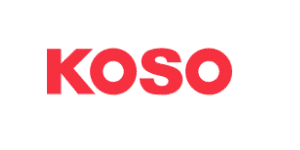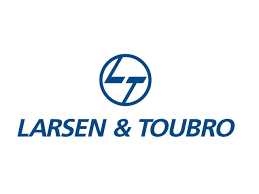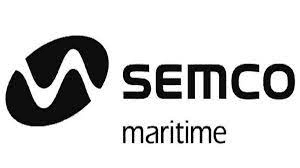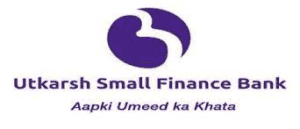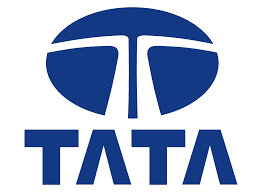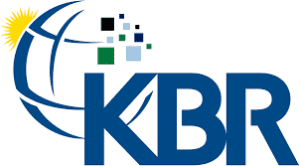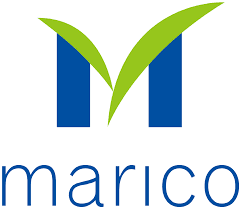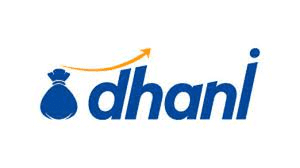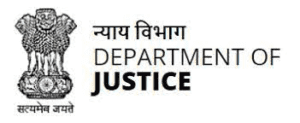eLearning Translation Services
Tridindia delivers eLearning translation and localization services in 190+ languages, helping businesses adapt content for specific audiences and effectively engage global learners.
Home » Services »Translation » eLearning Translation Services
What is eLearning Translation and eLearning Localization?
eLearning translation and localization are distinct terms yet related processes. eLearning translation is converting a digital learning course from its original language into a target language. eLearning localization is the process of adapting online learning content to meet the specific linguistic, cultural, and regional context of a target audience. So, whether it’s animation, text or audio, eLearning translation can help to make every type of content adaptable to the market.
Authentic eLearning localization process includes translation that can help you to create materials available in different language versions. Here are the ways it can be helpful:
✷ Web Based Training
✷ Computer Based Training
✷ Audio Voiceovers
✷ Subtitling
✷ UI Translation
✷ XML Content
✷ QA Testing in Source
✷ Documentation, etc.
Whether it is about translating or localizing, it is about making eLearning filled with interactive components to ensure a natural and engaging experience for learners.
Who Needs eLearning Translation?
eLearning can allow learners to study at their own pace and from anywhere online. In this, the eLearning translation agency makes it ideal for students, employees and busy individuals who may have limited access to traditional learning environments to get access to much better solutions.
✷ Online Platforms: Several online platforms belonging to the eLearning industry get the content available in different languages to get the edge over competitors in new markets.
✷ Authors: Several authors prefer eLearning translation to make the information accessible to students globally and make a difference in international education.
✷ Students: Students of different streams find eLearning a flexible way to access courses. This allows them to learn at their own pace and on their own schedules.
✷ Employees: New employees and even old ones go for the training and eLearning is a cost-effective and scalable way for businesses to train and develop their workforce.
✷ Busy Individuals: For skills development, individuals enhance their knowledge through eLearning and can benefit from the vast array of online learning resources.
✷ Businesses: eLearning is one of the great ways to connect and allows individuals to learn when and where it’s convenient while staying with their other commitments.
Why Translate and Localize your eLearning?
Whether it is about learning or training, eLearning localization services are crucial to reach out to diverse regions and build a diverse workforce. This ensures that training materials are culturally relevant and compliant with local regulations. Here below reasons explain why you must localize and translate the elearning content:
✷ eLearning localization ensures linguistic accuracy and consistency, facilitating clear communication and effective learning.
✷ It allows adapting the multimedia elements, such as voiceovers, subtitles, and graphics, to enhance engagement, improve comprehension, and foster inclusive learning environment.
✷ Ensuring compatibility and accessibility for all employees are key aspects of successful localization. This supports seamless integration that caters to diverse learning preferences, enhancing overall effectiveness.
Manual
Localization
Native
Localization Experts
Quality
Assurance


Why Is eLearning Translation Important?
With globalization and digitalization, businesses and educational institutions find it easy to operate in multiple geographical locations. However, providing eLearning content may not yield the desired results if it is not in the local language. By getting certified eLearning translation services you can make the learning process more effective and given below facts will let you know why to translate eLearning materials:
✷ Around 91% of the workforce prefers training to be personalized and relevant in their own language.
✷ 50% of global training initiatives fail when they don’t prefer using local language.
✷ Learners are 3 time more likely to remember information when understood in their language.
eLearning courses have to be translated as well as localized to make them accessible and relevant to your learners from across the world. While translation means adapting the text from one language to another, localization means customizing the training modules as per the locale of the learner.
What are the Benefits of eLearning Translation?
Translating eLearning materials must not be limited to breaking language barriers. It’s a strategic investment in the growth of your business and can allow you to reach out to a globally connected environment. As you get eLearning translation services in India, this provides:
a)- Bring In Inclusivity: You want the eLearning courses and training materials to fit the market and translation can bring in inclusivity. It makes your content ready to reach out to people of various linguistic backgrounds, abilities, and preferences to have equal access to knowledge.
b)- Enhanced Learning Experience: Getting eLearning translation encourages greater participation, engagement, and a stronger sense of community. So, it is the best way that creates a more engaging and relatable learning experience for non-native speakers.
c)- Allow Global Reach: As you prefer to translate your eLearning courses and training materials into multiple languages, you deliver knowledge to a wider audience. From independent learners, corporate employees, to students each one of will get the learning materials in their native language.
d)- New Opportunities: Getting with the top-notch eLearning localization agency opens up new markets and revenue streams. So, it can help you be ready to use the opportunities provided by the market.
e)- Cultural Sensitivity: Translation and localization help to avoid cultural insensitivity and allow the content to align with cultural norms and values. It will help to maintain a positive image and avoid misunderstandings in the learning process.


Why Do You Need Professional eLearning Translation Services?
eLearning becomes more impactful when conveyed in the learner’s native language. In the era of advanced technology and being a part of business expansion, the global companies want to reach out to their target audience and the coaching in the culture and language they understand the best. To accomplish this, getting the eLearning translation service will help you to reconstruct and change your learning content to match the global markets. Getting with professional translators will provide you assurance:
✷ Getting error-free translation
✷ Receive translation from professional translators
✷ Get the translation with correct terminologies used
✷ Expect to see fast growth in the new market
✷ Expect content to be culturally relevant
Overall, Tridindia can assist you with creating varied multilingual solutions to fulfill your specific training requirements and boost your brand integrity within an affordable budget.
Types Of eLearning Localization
The Internet provides with multiple options for learning and eLearning localization helps to provide convenient education. For making eLearning courses available to wider audience, it involves adapting online learning materials such as written text, audio narration, and visual elements ensuring the overall user experience. Getting eLearning translation India can help in localizing different types of eLearning materials, such as:
- E-learning courses
- Self-learning videos
- Corporate training videos
- Instructional videos
- Quizzes
- Interactive e-learning games
- Textbooks
- Workbooks
- Course Content
- Presentations
- Interactive Modules
- E-books and Manuals
- Assessments
- Quizzes
- Certifications and Diplomas
- Self-learning videos
- and more..
eLearning Translation vs. eLearning Localization
eLearning translation and localization may seem similar but their approach is different. Here are the differences you need to know:
1- eLearning translation: It always focuses on language conversion and real eLearning translation service ensure that translated courses fully convey the original content. It works on the following aspects:
2- eLearning localization: It goes beyond mere translation by adapting content to the cultural, regional, and contextual nuances of the target market. It works on the following aspects:


eLearning Content: Should You Translate or Localize?
Your translation needs may vary and the solution depends upon your goals and the type of content you want to make adaptable to the market. If you are confused between choosing eLearning translation services or localization solutions, consider the following aspects:
Example
Suppose you are working on a series of learning courses on corporate training in the English language. Some of your audience includes employees who feel good in Spanish language. Initially, you may think of translating the courses into Spanish but the images and context may not feel similar to the Spanish audience.
So, you may need eLearning localization services for the best results. To make it more relevant you must decide to opt for localization. This approach requires a slightly longer timeline and also requires more budget to ensure content is accessible, culturally relevant, while meeting all market standards.
Why Should You Choose Tridindia?
When you are searching for a promising eLearning translation agency in India, choosing Tridindia can be your best decision. Our team of native translators ensures that your eLearning courses, videos, and interactive modules get perfectly adapted while maintaining the original content’s integrity and accuracy. We are ISO certified firm and adhere to top-quality standards to deliver high-quality and consistent eLearning translations. With us you can get:
✷ Access to a professional and experienced team
✷ Expect to get translation faster
✷ Quality assurance solutions and more cost-effective solutions
✷ Gain a competitive edge in target markets
✷ Follow the proper project management approach
✷ Deliver translation in 100+ languages
Choosing us will allow you to collaborate with specialized linguists and subject matter experts to deliver translations that meet international market standards.

Type of Languages We Offer for eLearning Translation
eLearning platforms have now evolved and they provide tailored to individual needs and learning styles, offering personalized content. Getting top-notch eLearning translation service in India allows learners to explore various subjects and develop new skills. For businesses and institutes, eLearning can significantly reduce the training costs associated and allow scalability to accommodate a large number of learners. Here are the following languages in which we provide eLearning translation:
- Punjabi ELearning Translation
- Hindi ELearning Translation
- Urdu ELearning Translation
- Bengali ELearning Translation
- Tamil ELearning Translation
- Telugu ELearning Translation
- Malayalam ELearning Translation
- Gujarati ELearning Translation
- Russian ELearning Translation
- Spanish ELearning Translation
- French ELearning Translation
- German ELearning Translation
- Japanese ELearning Translation
- Arabic ELearning Translation
- Chinese ELearning Translation
- ELearning Translation
- Dutch ELearning Translation
- Turkish ELearning Translation
- Portuguese ELearning Translation
- And more..
Our international network of native speaking and highly qualified translators is fluent in more than 250 languages. No matter which language pairs you have to target, we ensure that you will receive a high degree of accuracy on every platform and every time with 100% satisfaction. We offer precise translation of eLearning with ease and no hassles.
How to Create a eLearning Translation Strategy?
With eLearning localization of modules, it helps to enhance learner engagement by making the content available in a language. It helps to better comprehend the modules and allow better engagement. Here are the simple steps a professional eLearning translation company follows to deliver successful translation:
1-Proper Content Analysis
✷ Understanding Requirements: Before translation and localization, it is important to examine the original course content. Consider evaluating text, images, audio, and videos, to understand its context and purpose.
✷ Target Language and Culture: Identify the target language and target market to consider cultural nuances. It is necessary to have a strong impact on the market.
2- Translation
To carry out the translation, it is best to choose qualified translators who are native speakers of the target language and have expertise in the subject matter.
3- Multimedia Localization
For eLearning localization, adapting multimedia elements such as visual, audio, and video helps to go best with target language and ensures accurate synchronization.
4- Quality Control
Before delivering the translation, a quality control check is important to conduct thorough proofreading and review of the translated content to ensure accuracy.
5- Delivering and Updating
After delivering the translation, it is important to keep updated with the client review to make changes when required.

Common eLearning Translation Challenges
Despite its importance, eLearning translation poses several challenges. Understanding the key challenges and learning how to overcome them is essential for delivering a truly global eLearning experience. Here are some major challenges that you may encounter:
a)- Handling Linguistic and Cultural Differences
As you prefer to make eLearning material available for different markets, linguistic and cultural nuances can bring unexpected difficulties. When you hire a reliable eLearning localization company, professional translators are highly skilled in dealing with the intricacies of linguistic and cultural variations.
From slang and jokes to subtle cultural references translators can opt for localization to deal with the problematic parts of the content.
b)- Hidden Translation Costs
Some businesses get frustrated with the hidden costs that can creep into your project at any stage. It may come up while dealing with complex graphics or bulky multimedia elements that might require extra efforts. Additional translation adds up while meeting all the regulatory requirements in the target locale.
c)- Preserving Design
When translating the eLearning content, the original layout and course design must be maintained. Sometimes there is need to make changes in the design when translated text carries more volume or follow a different text alignment.
Getting with a trustworthy eLearning translation agency can solve this problem effectively with the help of the skilled team members.
Benefits of Outsourcing eLearning Translation Services To Us
Translating and localizing the e-learning materials help a business increase its revenue. But, it may prove to be costly to you, if you choose the wrong vendor for your translation requirements. Also, you may experience situations where your solutions get lost in translation. We are a reliable eLearning translation company in India and by outsourcing these services to us, you’ll have the following benefits
Data Privacy
Culturally Relevant
Quality Control Systems
Native Translator
Years Of Experience
Faster TAT
Customer satisfaction is our ultimate aim. This is why, as long as you are with us, you can rest assured that you will be provided with an authentic translation that actually helps you meet your business objectives. We translate the learning materials keeping the end-users in mind. Hence, if you are looking forward to clear and compelling translations, you are at the right place.
Don’t hesitate to contact us for inquiries!
Our team is ready to work on different file formats and ensure translated learning materials are clear, engaging, and aligned with educational goals. To know more, reach out to us now.
Easy Project Consultation
Certified Translation
We are dedicated to
serve you all time
With eLearning translation transforms the learning material by improving comprehension
and retention and makes it adaptive to the native language.
Choosing Tridindia for ELearning Translation Can Be Your Good Decision
Digitalization has made it easy for businesses and educational institutions to reach out to multiple geographical locations. In this, getting with the eLearning translation agencies improves retention and engagement, making employees feel more involved and committed to the learning process. Our professional experts match the tone, style, and pace of the original content, ensuring that the educational intent stays relevant to the target audience’s needs. Here are the reasons to get to us:
Higher Quality & Accuracy Level
Comprehensive Language Solutions
Certified
Translation
Native Expert
Translators
Easy Project
Consultation
Fastest Turnaround
Time
The Unbeatable eLearning Translation Services Since 2002
Take some easy steps for eLearning Translation Order
Contact us first
Consult with Project Manager
Place Your Order
Get Delivery On Time
Frequently Asked Questions on eLearning Translation
Q1. What is eLearning Translation?
eLearning translation is the process that involves translating and localizing eLearning projects as per your audience needs. We ensure maintaining the original content’s integrity and accuracy which leads to great results.
Q2. Do you show a sample of elearning translations?
Q3. What are different industries do you serve?
Q4. How much experience your company has in the field of translation?
Q5. How do you give assurance of confidentiality?
Q6. How will you deliver eLearning translation service?
We most probably deliver complete project work via e-mail before the deadline date.
Q7. Do you provide us error-free elearning translation?
Q8. What’s the cost for quotes?
Q9. Do you have experienced eLearning translators?
Q10. Do you provide us the quality eLearning translation?
Q11. Do make changes if I request you to make in a translated content post-delivery?
Q12. How can I reach you?
With years of experience, we know what your industry needs for growth.
Through our industry knowledge and experience, we execute translation that will definitely profit your business.


